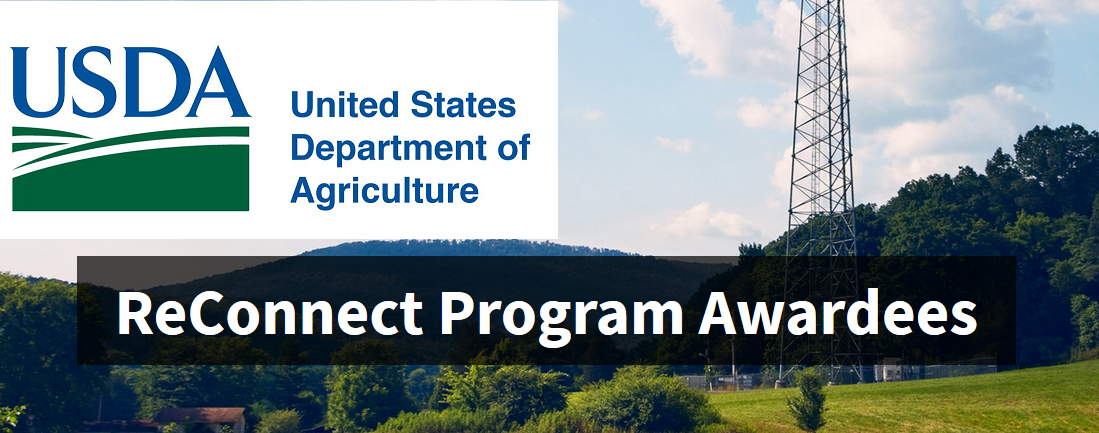Rural Digital Opportunity Fund – Draft Report And Order – RDOF Phase I Auction Participants Will Place Bids Using Four Broadband Performance Tiers
January 22, 2020 – The Federal Communications Commission (FCC) has released a draft Report and Order which establishes a framework for the Rural Digital Opportunity Fund (RDOF).[1] The FCC will vote on the item during its open meeting on Friday, January 30, 2020. It’s possible that parts of the draft order will be revised before the final version is adopted by the FCC.
Much of the RDOF framework is similar to what was originally proposed in the August 2019 Notice of Proposed Rulemaking, but with more focus on driving funding toward the deployment of networks that provide higher speeds and low latency.[2] The RDOF will commit up to $20.4 billion over a ten-year period to support the deployment of broadband networks to areas in rural America that are wholly unserved by broadband service at speeds of at least 25/3 Mbps and areas that are partially served by that level of service. Funding will be allocated using a multi-round, reverse, descending clock auction that favors faster services with lower latency and encourages intermodal competition. The RDOF will distribute funding in two phases. Phase I – $16 billion – will target areas that current data confirm are wholly unserved. Phase II – $4.4 billion – will target unserved locations within areas that data demonstrates are only partially served, as well as any areas not won in Phase I.
As proposed in the draft Report and Order, for Phase I of the RDOF, auction participants will place bids in four broadband performance tiers, and each tier will differentiate between bids that would offer either low or high latency service. Bids in each performance tiered will be weighted to reflect a preference for higher speeds, higher usage allowances, and low latency.
Minimum Performance Tier – 25/3 Mbps
The Minimum performance tier means the bidder commits to providing broadband service at speeds of 25/3 Mbps with a usage allowance that is the greater of 250 GB per month or the average usage of a majority of fixed broadband customers as announced by the Wireline Competition Bureau on an annual basis. Bids in the Minimum performance tier will carry at weight of 50.
Baseline Performance Tier – 50/5 Mbps
The Baseline performance tier means broadband service at speeds of 50/5 Mbps speeds with a 250 GB monthly usage allowance or a monthly usage allowance that reflects the average usage of a majority of fixed broadband customers as announced on an annual basis, whichever is higher. Bids in the Baseline performance tier will carry a weight of 35.
Above-Baseline Performance Tier – 100/20 Mbps
The Above-Baseline performance tier means broadband service at speeds of 100/20 Mbps speeds with 2 TB of monthly usage. Bids in the Above Baseline performance tier will carry a weight of 20.
Gigabit Performance Tier – 1 Gbps/500 Mbps
The Gigabit performance tier means 1 Gbps/500 Mbps speeds with a 2 TB monthly usage allowance. Bids in the Gigabit performance tier will have a weight of zero.
Low & High Latency Bids
Low or high latency bids will be required to meet the same latency requirements used in the CAF Phase II auction. Low latency means 95% or more of all peak period measurements of network round trip latency are at or below 100 milliseconds. Low latency bids will have a weight of zero. High latency means 95% or more of all peak period measurements of network round trip latency are at or below 750 milliseconds and a demonstration of a score of 4 or higher using the Mean Opinion Score with respect to voice performance.[3] High latency bids will carry a weight of 40. The FCC noted that the decision to adopt these latency standards for RDOF Phase I “does not preclude the Commission from reconsidering the feasibility of modifying latency standards to accommodate low earth orbit satellite and hybrid satellite technologies for Phase II of the Rural Digital Opportunity Fund.”[4]
Bidding Weights
Under the RDOF Phase I descending clock auction format, bidding weights will be subtracted from the clock percentage for the round, to indicate the percentage of an area’s reserve price that a winning bidder would receive in per-location support for serving the locations in that area.[5] For example, if the clock percentage is 120%, the support amount corresponding to a bid with a combined weight of 20 would be 100% of the area’s reserve price per location. Although the clock percentage may start above 100%, a winning bidder would not receive more than 100% of the reserve price.[6]
RDOF Service Requirements – Standalone Voice & Voice And Broadband Services
All RDOF support recipients will be required to offer standalone voice service and offer voice and broadband services at rates that are reasonably comparable to rates offered in urban areas.[7]
**********
[1] Rural Digital Opportunity Fund, WC Docket No. 19-126, Connect America Fund, WC Docket No. 10-90, Report And Order, FCC-CIRC2001-01 (Jan. 9, 2020) (Draft Report And Order), available at https://docs.fcc.gov/public/attachments/DOC-361785A1.pdf.
[2] Rural Digital Opportunity Fund, WC Docket No. 19-126, Connect America Fund, WC Docket No. 10-90, Notice of Proposed Rulemaking, FCC 19-77, 34 FCC Rcd 6778 (Aug. 2, 2019), available at https://docs.fcc.gov/public/attachments/FCC-19-77A1.pdf.
[3] Draft Report and Order at ¶ 32.
[4] Draft Report and Order at ¶ 37.
[5] Draft Report and Order at ¶ 38.
[6] Draft Report and Order at footnote 108.
[7] Draft Report and Order at ¶ 42.





